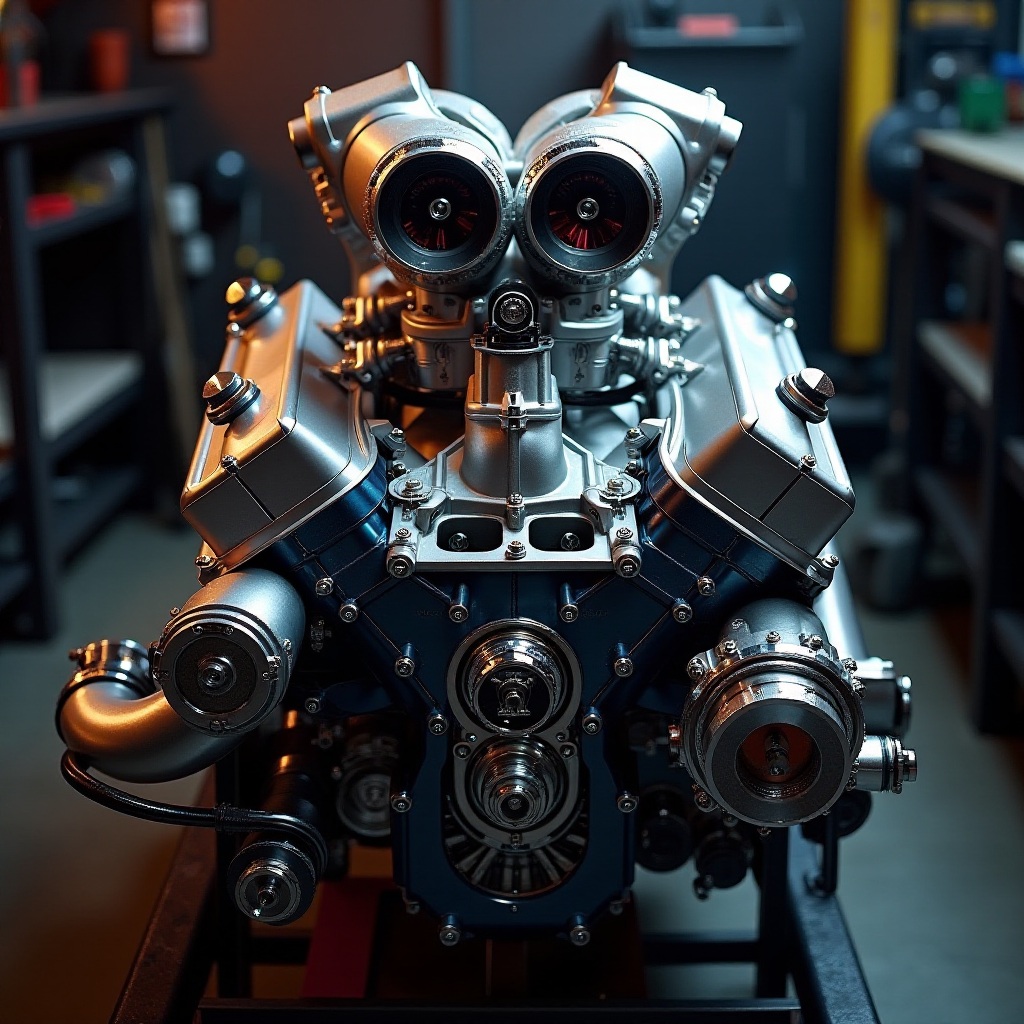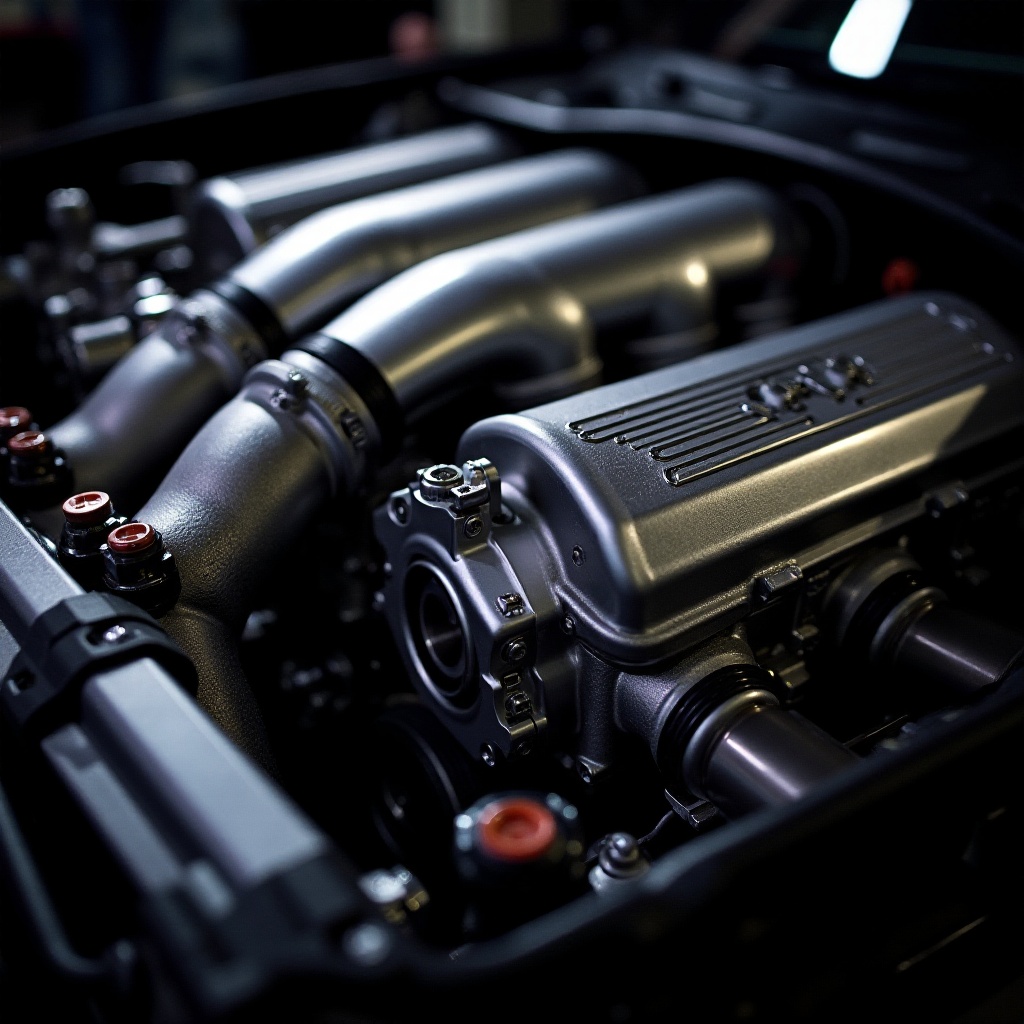Introduction
Ken Block’s Hoonicorn V2 is not just any racing machine; it symbolizes automotive innovation and unbridled power. Car enthusiasts and speed aficionados around the globe are drawn to its thrilling performance and cutting-edge engineering. The heart of this exceptional car lies in its potent engine. Understanding what engine is in the Hoonicorn V2 provides insight into the automotive brilliance it embodies. This article unpacks the evolution, engine specifics, performance metrics, and future possibilities of the Hoonicorn V2 in the evolving world of automotive engineering.

The Evolution of the Hoonicorn
The original Hoonicorn started as a 1965 Ford Mustang, transformed into a drifting powerhouse. Ken Block and his team at Hoonigan took it to unprecedented levels with its all-wheel-drive system and aggressive styling. Yet, they didn’t stop there. The Hoonicorn V2, a refined beast, emerged from demands for even greater performance.
The transition from the original Hoonicorn to the Hoonicorn V2 showcased improvements beyond mere aesthetic updates. Any true car enthusiast would recognize the shift in engineering precision and overall power. Adding two turbochargers to the already potent engine of the original Hoonicorn catapulted its performance into uncharted territories. This evolutionary leap represents dedication to continually pushing performance boundaries.

Under the Hood: The Engine of the Hoonicorn V2
At the heart of the Hoonicorn V2 lies a truly unique setup. This car is equipped with a 6.7-liter Roush Yates V8 engine. What sets this engine apart is its twin-turbo system that pushes the car to new heights in performance. These twin turbochargers are a significant upgrade, transforming an already impressive engine into an absolute powerhouse.
To break it down further, the V8’s architecture lends itself to high-performance tuning, ensuring that the car can handle the increased pressure and heat generated by the twin turbos. This robust engine design means sustained power without compromising reliability. One of the most remarkable aspects is the engine’s ability to produce up to 1,400 horsepower, a feat managed by few production or customized engines worldwide.
Moreover, the precision engineering involved in setting up the Hoonicorn V2’s engine continues to pique the interest of automotive engineers and enthusiasts. The choice of components, from the turbochargers to the high-performance camshaft and pistons, echoes a design philosophy aimed squarely at achieving unparalleled speed and durability. The engine of the Hoonicorn V2 highlights an extraordinary blend of power and engineering finesse.
Performance Metrics and Specifications
Numbers don’t lie, and when it comes to the Hoonicorn V2, they tell a tale of unrivaled speed and power. The 6.7-liter twin-turbocharged V8 engine propels this vehicle to extraordinary levels. Let’s dive into some key performance metrics and specifications.
-
Horsepower and Torque: Producing approximately 1,400 hp at 8,600 RPM, the Hoonicorn V2’s engine is a marvel. The torque figures are equally impressive, generating about 1,250 lb-ft.
-
Acceleration: This beast can go from 0 to 60 mph in just around 2.1 seconds, showcasing its incredible acceleration capabilities.
-
Top Speed: While primarily designed for drifting and not just top speed runs, the Hoonicorn V2 can exceed speeds of 200 mph.
-
Transmission: Equipped with a 6-speed Sadev SC90-24 all-wheel-drive gearbox, the power is appropriately managed and distributed for optimal performance and control.
These metrics underscore the sheer brutality and performance level of the Hoonicorn V2, making it a dominant force in the world of custom performance vehicles.
Traditional Engines vs. Modern Electric Powertrains
The automotive industry today finds itself at a crossroads with traditional internal combustion engines and modern electric powertrains. The Hoonicorn V2, with its powerful V8 engine, stands as a testament to the longstanding love affair with internal combustion. However, electric vehicles (EVs) offer some compelling advantages.
Traditional engines like the one in the Hoonicorn V2 excel in providing instant power and a visceral driving experience. The roar of a V8, the smell of fuel, and the tactile feedback are all elements that petrolheads hold dear. On the other hand, EVs offer distinct advantages:
– Instant Torque: Electric motors can deliver power instantly, providing quick acceleration.
– Environmental Impact: Reduced emissions make EVs a greener choice.
– Maintenance: Electric powertrains typically require less maintenance and have fewer moving parts.
Yet, the visceral thrill of a twin-turbo V8 like the one in the Hoonicorn V2 is irreplaceable. The tactile feedback, combined with raw power, makes it a unique experience that EVs are still catching up to.
Where Does the Hoonicorn V2 Fit in the Future of Automotive Engineering?
The Hoonicorn V2, while a showcase of current engineering prowess, also raises pertinent questions about the future. As automotive industries shift towards sustainable solutions, where does a car like the Hoonicorn V2 fit in?
Despite the electrification trend, there will always be a space for performance-driven, internal combustion masterpieces. The Hoonicorn V2 represents a blend of art and engineering that captures enthusiasts’ imaginations. Future automotive engineering may well continue to learn from and integrate technologies seen in such bespoke vehicles.
Moreover, advances in synthetic fuels and hybrid technologies might ensure that performance cars like the Hoonicorn V2 retain their relevance without forsaking environmental concerns. Thus, the Hoonicorn V2 might not just stand out as a relic of automotive glory but also point towards a harmonized future of raw power and sustainability.

Conclusion
The Hoonicorn V2 is a remarkable feat of engineering and pure performance prowess. Its 6.7-liter Roush Yates V8 twin-turbo engine stands out in a world moving towards electric vehicles. While the future may lean towards electrification, the raw, visceral power of the Hoonicorn V2 ensures it will be remembered as a landmark in automotive history.
Frequently Asked Questions
What is the horsepower of the Hoonicorn V2?
The Hoonicorn V2 boasts an astounding 1,400 horsepower, thanks to its meticulously engineered 6.7-liter Roush Yates V8 engine with twin turbos.
How does the Hoonicorn V2’s engine compare to typical EV engines?
While the Hoonicorn V2’s engine provides unmatched raw power and a visceral experience, conventional electric vehicle engines focus on efficiency, instant torque, and environmental sustainability.
Could the Hoonicorn V2 possibly be adapted into an electric vehicle in the future?
Given the current trends towards electrification, it’s conceivable that a future adaptation could integrate electric powertrains while preserving the Hoonicorn V2’s iconic performance spirit.
